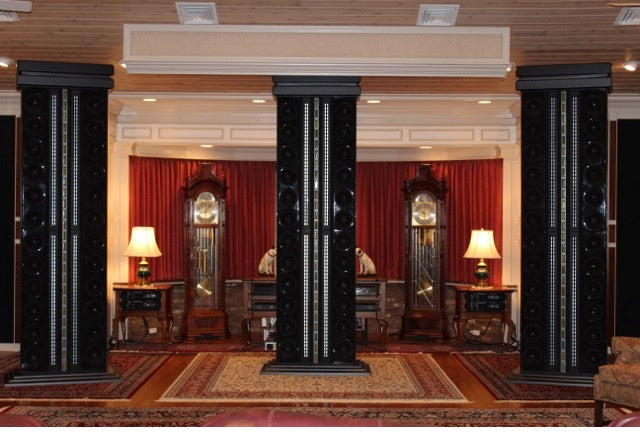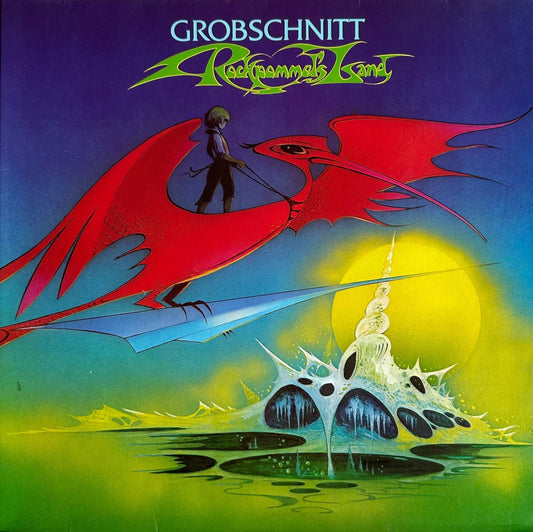[We previously featured Ken Fritz’s amazing speaker and listening room project in Copper #72 and #73. We’ll wrap up now with some of the details. I hope you’ll find this inspirational— although I doubt if many will read this and think, “yeah, I could do that”. I certainly couldn’t!–-Ed.]
I might add that all the pine painted trim in the room was run in my shop using #1 molding pine. I own a 1 inch diameter spindle shaper and a myriad of profile knives, which made it possible and easy to produce all the pine trim throughout the room. Being able to run all my moldings, it was easy to fabricate trim that was outside the standard shapes when I so desired.
All the white oak raised panels, chair rail moldings and associated oak accoutrements were produced from the wood that I harvested 20 years earlier from this property. The two 30 inch diameter white oak trees had grown too close to the footings and foundations of both the house and the shop; I trimmed the two trees into a pole and had a crane service tie them off at the top. I then cut 12 ft. sections at the bottom of the trees and continued to have them lowered to the ground as I cut successive 12 foot logs. I then rented a portable saw mill and my wife and I logged all the lumber. We then stickered and covered it on our property and let it all air dry for about 8 years. After that, we then took it to out manufacturing plant in Petersburg ,Virginia, where we stickered and stacked it on top of our pallet racks for another 8 or so years. After that time the lumber was down to 7% moisture content, and we proceeded to make all the oak raised panels, chair rails and other pieces for the room.
Sue and I feel it’s unique to have made all the white oak pieces from two trees on the property.
In order to have some sort of protective grilles on the speakers, we used .080 inch diameter EPDM rubber strings stretched in front of the drivers, through the top and bottom looms. This material was used by Krell in their Modulare loudspeaker systems. Before I thought to ask Dan D’Agostino if he would allow me to use his material, I was planning on just using double knit material I bought from Jim Thiel.
The effect of the rubber strings was magnificent. Before I embarked on doing this and having ALL the top and bottom looms machined for the three front and four surround towers I tried an experiment. I fabricated a 2 ft. wide by 3 ft high loom and after stretching the rubber strings I asked my wife to stand next to a speaker and move it in and out of the soundfield. I needed to make sure that this type of grill wouldn’t impede or change the character the emanating sound. I could hear no difference so I proceeded to have all the looms for all the speakers machined and powder coated black.

A top view of the Krell amplifiers I chose to drive the three front channels and subs.

A shot of the looms for the seven loudspeakers ready for powder coating.

Another shot of the looms for the seven loudspeakers ready for powder coating.

This shot was taken after all of the looms were strung and installed in the top and bottom of the speakers. You will note that, at that point, the room was not fully completed.

Stretching the looms in place on the speakers.

This image shows the tedious work of stretching the .080” EPDM rubber strings.

Another shot to show the tedious work of stretching the .080” EPDM rubber strings.

A rear view of one of the towers with a Krell FPB 600 in place.
In the image below, we are painting the yellow Kevlar cones black to eliminate the bullseye effect when looking at the speakers. When I ordered all the 72 mid-bass drivers from Scan Speak, I never thought about how it would be looking at 72 bullseyes. The cones were also available with a black coating which I should’ve ordered. When I spoke with an engineer at Scan Speak and asked him if I could purchase the black doping material, he suggested I just blacken them with a magic marker instead. Besides being easier, it didn’t increase the mass of the cones, as would’ve been the case with the black mastic. In reality, the cone excursions of the drivers are almost nothing, so increased mass would’ve made little difference as the cones only operate from 60 to 200HZ.

A surround tower next to a front speaker, for a size reference. Note the eight 15-inch Krell sub drivers in the background and the yet empty bass absorber cavity, one in each front room corner.

A view of the interconnection of the mid and tweeter drivers. Note the top tweeter driver facing to the rear, wired out of phase, for a dipole arrangement.

A view of one of the surround towers, which were built in mirror image pairs,. This is looking at the cast polymer battle and drivers through the stretched grill created by the EPDM strings.

Rubber strings cut to size waiting to be strung.

An image of the front of one of the three front speakers prior to installation of the rubber grills.

A view of the drivers behind the stretched rubber grills.

Stretching and installing the grills.

Stretching and installing the grills.

Stretching and installing the grills.

Stretching and installing the grills.

A view of the left front channel, with the Krell subs behind, and bass trap in the left corner of the room.



